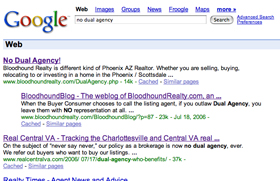The Real Estate Investing For Real Blog cites 7 Creative Ways to Market Your Property in a Cold Housing Market:
Properties are not getting multiple offers and selling within hours of listing anymore. Things have calmed down a bit across most of the country, and properties are now sitting on the market. The traditional method of listing your property with a real estate agent and waiting for people to buy isn’t going to cut it anymore, unless you price very aggressively.
What can you do? The market has gotten a bit cold – showing a definite slowdown. If you insist on holding out for top dollar, you may get a bit creative…
 Some of the ideas suggested are better than others. Here’s my deal: For every one I don’t like, I’ll post a replacement suggestion. At the end, we’ll have seven for seven, just not necessarily the same seven.
Some of the ideas suggested are better than others. Here’s my deal: For every one I don’t like, I’ll post a replacement suggestion. At the end, we’ll have seven for seven, just not necessarily the same seven.
- Auctions.
I don’t love this. If you come in without a minimum bid, you risk giving up the house for peanuts. If you do have a minimum, you risk getting no bids. Auctions work well where demand is high or price is low. My alternative idea: Auction the house (with a reserved minimum bid) on EBay.com. Reveal this fact to every starry-eyed reporter in town. The buzz could sell the house if the auction doesn’t. - Use all the mania in social networking to create buzz.
Among whom? And assuming there’s a whom, why would they be buzzed about a house for sale? Try this instead: Put a great ad on CraigsList.com every other day. REIFRBlog continues:
Create a simple website for your property, then post creative titles on the social sites like del.icio.us or reddit.
Okay, but better yet, create a nice, clean weblog for the property, with an extensive web site as ancillary support — with dozens of photos — then promote it as a part of every other bit of marketing you do. This REIFRBlog list suggest many types of internet social marketing among distant strangers, but, in fact, your marketing should be targeted to people who really are likely to buy your home — for example, people currently Read more

 I wrote my web page on
I wrote my web page on